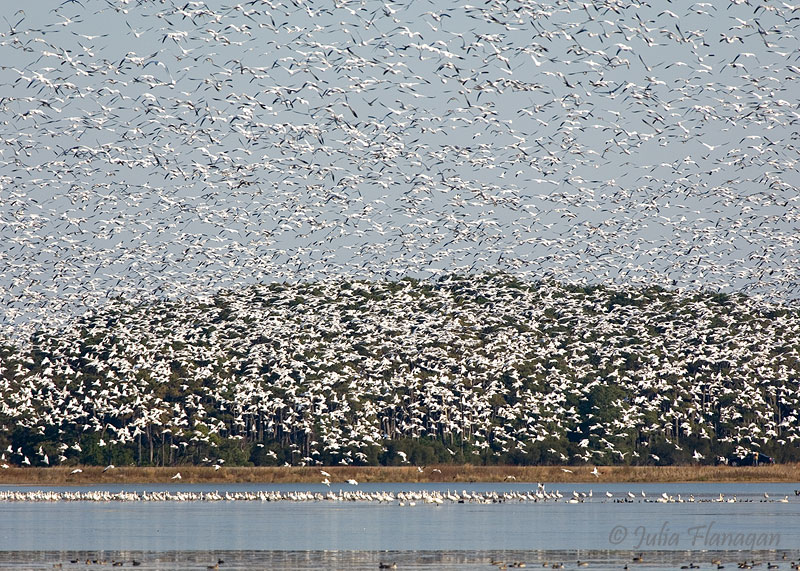|
|
||
|
Snow Goose The Snow Goose, also known as the Blue Goose, has two color plumage morphs, white or gray/blue. White-morph birds are white except for black wing tips, but blue-morph geese have bluish-grey plumage replaces the white except on the head, neck and tail tip. Both have rose-red feet and legs, and pink bills with black cutting edges. Snow geese breed north of the timberline in Greenland, Canada, Alaska, and the northeastern tip of Siberia, and in warm parts of North America from southwestern British Columbia through parts of the United States to Mexico. |
Home | Upcoming Events | About Us | Resource Issues | News | Local Contacts Maps | Photos | Publications | Youth Education | FAQ's | Links | Membership |






